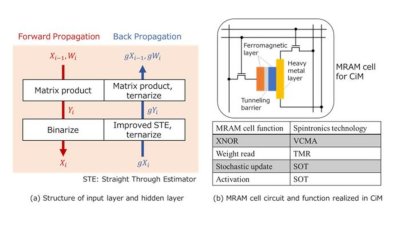Researchers design novel graphene-based spin valve that relies on van der Waals magnet proximity
A team of researchers from CIC nanoGUNE, IKERBASQUE, IMEC and CNRS have reported a spintronic device that leverages proximity effects alone, specifically a 2D graphene-based spin valve. The functioning of this valve relies only on the proximity to the van der Waals magnet Cr2Ge2Te6. Spin precession measurements showed that the graphene acquires both spin–orbit coupling and magnetic exchange coupling when interfaced with the Cr2Ge2Te6. This leads to spin generation by both electrical spin injection and the spin Hall effect, while retaining spin transport. The simultaneous presence of spin–orbit coupling and magnetic exchange coupling also leads to a sizeable anomalous Hall effect.
The primary objective of this recent study was to tackle a long-standing research challenge, namely that of realizing the first-ever seamless 2D spintronic device. The spin valve they developed could enable the manipulation and transport of spin entirely in the 2D plane.
